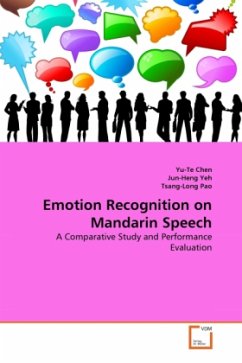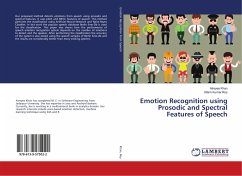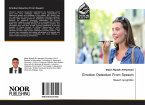In this work, we proposed a weighted discrete k-nearest neighborhood(WD-KNN) classification algorithm and compared it with several weighting schemes on KNN-based classifiers, including traditional K-Nearest Neighborhood (KNN), weighted KNN (WKNN), KNN classification using Categorical Average Patterns (WCAP), and WD-KNN. The highest recognition rate is 81.4% with WD-KNN classifier weighted by Fibonacci sequence. Then we evaluated the performance of several classifiers, including KNN, MKNN, WKNN, LDA, QDA, GMM, HMM, SVM, BPNN, and the proposed WD-KNN, for detecting emotion from Mandarin speech. The results of experiments and McNemar's test show that the proposed WD-KNN classifier achieves best accuracy for the 5-class emotion recognition and outperforms other classification techniques. Finally, we implemented an emotion radar chart to present the intensity of each emotion component in the speech in our emotion recognition system. Such system can be further used in speech training, especially for hearing-impaired to learn how to express emotions in speech more naturally.








